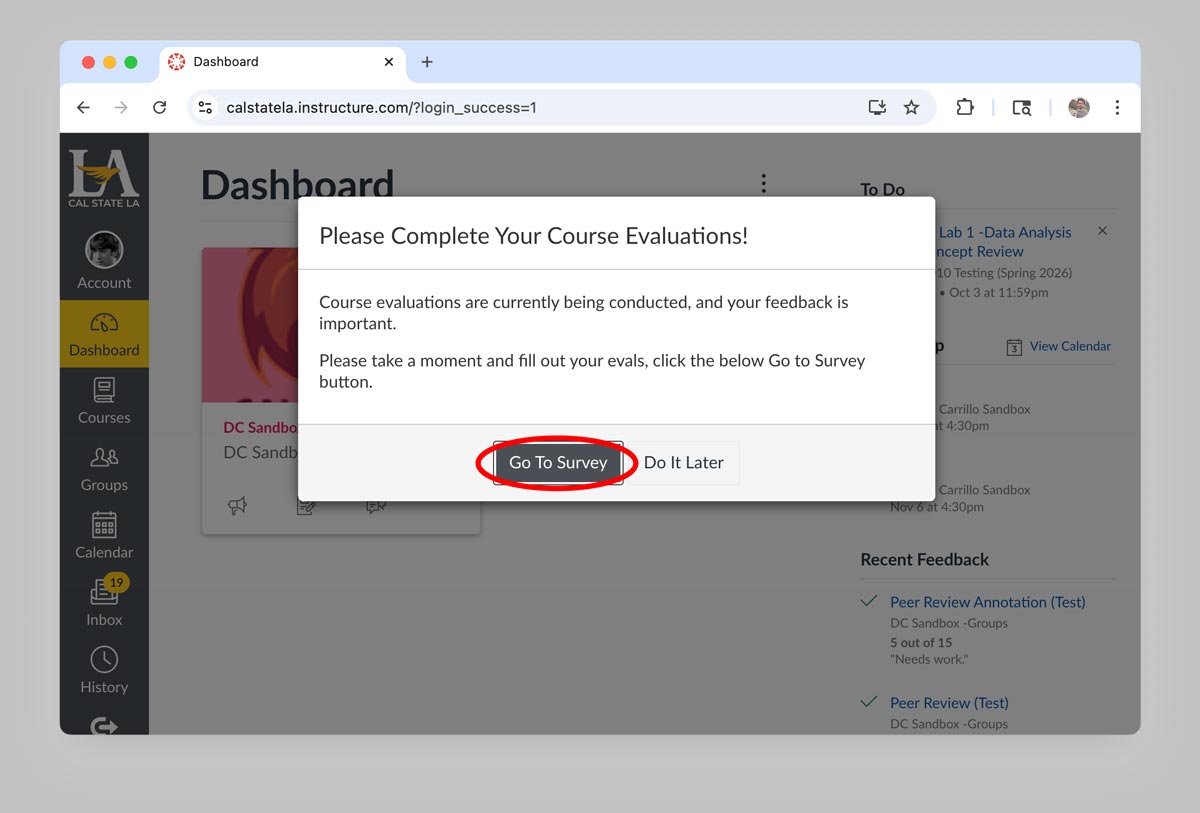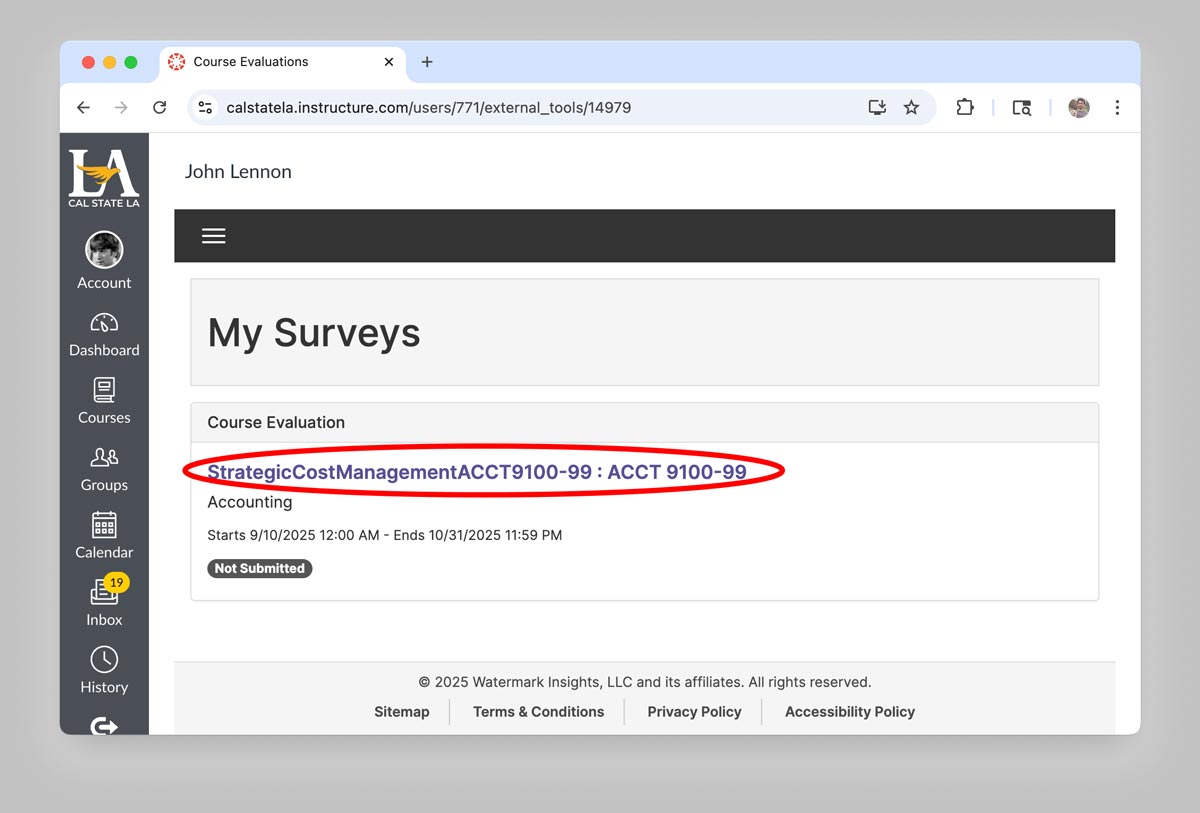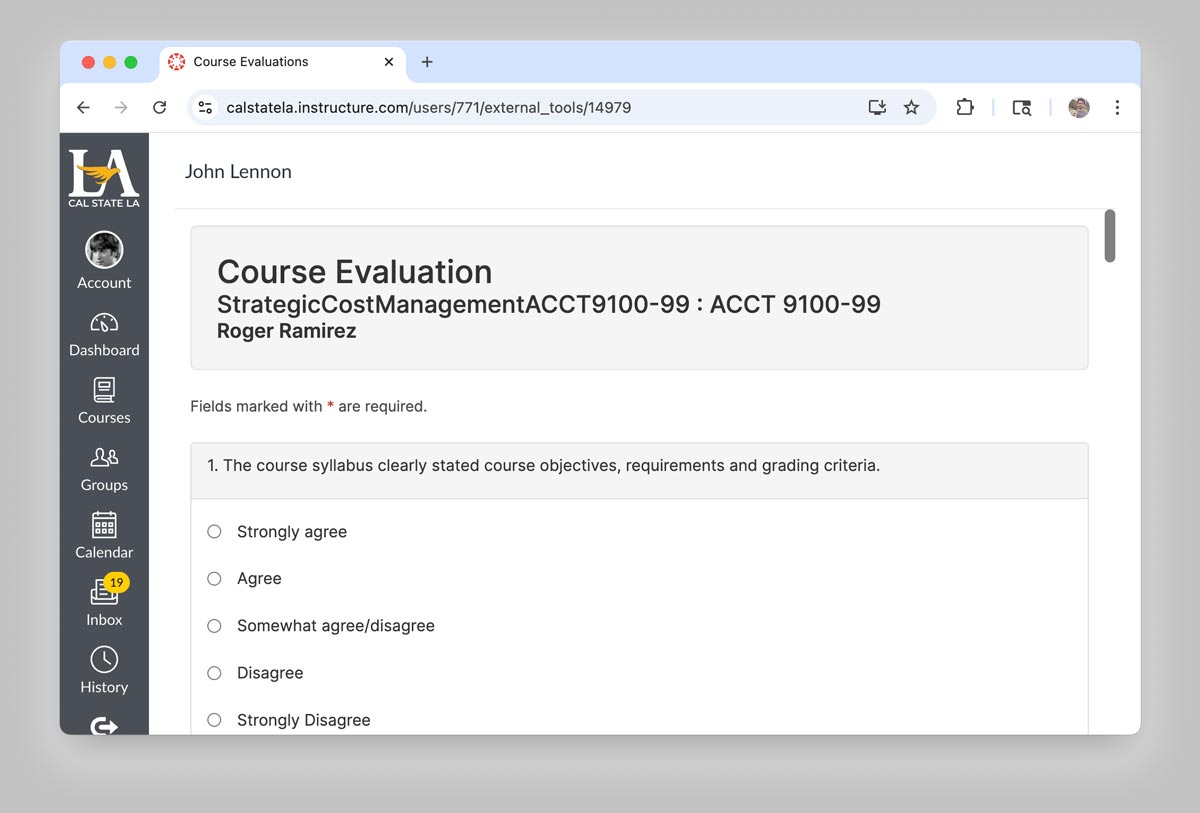Evaluating Your Courses
As we prepare for a new term at Cal State LA, we’re excited to provide a friendlier and more intuitive tool for course evaluation. Continuous improvement includes giving students an opportunity to be heard throughout their educational experience. To do this, we will be using Watermark Course Evaluation & Surveys to collect end of semester instructor and course feedback.
Evaluations will open November 23, 2025 and close December 7, 2025. You will have access to the evaluation survey through Canvas.
How it works
Watermark Course Evaluation & Surveys is an easy-to-use course evaluation system that integrates directly with our learning management system.
You will see a pop-up window upon logging in to Canvas that will direct you to the course evaluation survey.
Expectations
We encourage you to be open and honest in these evaluations. Your identity will be kept private, and your instructor will not see the results of your evaluation until grades are finalized. No identifying information is ever directly connected to the feedback you submit. Your feedback on your course experience is important to us because it will help us and your professor improve future offerings of the course. When you take the time to provide us with your feedback, you’re helping us improve the educational experience of future students. We hope you take advantage of this opportunity to share your course experiences with us.
Evaluation Walkthrough
Follow the instructions below to complete your course evaluations through Canvas.
- Look for the pop-up in your Canvas starting November 23.
- Complete your evaluations before December 7, 2025.
Step 1:
A pop-up window will appear on Canvas once you sign in to your account. Click on the “Go To Survey” button circled in red.
Step 2:
You will be directed to a list of links to your course evaluations. Click on the course name (circled in red) to begin the survey.
Step 3:
You will be directed to an evaluation survey. Complete the survey and submit your responses.




